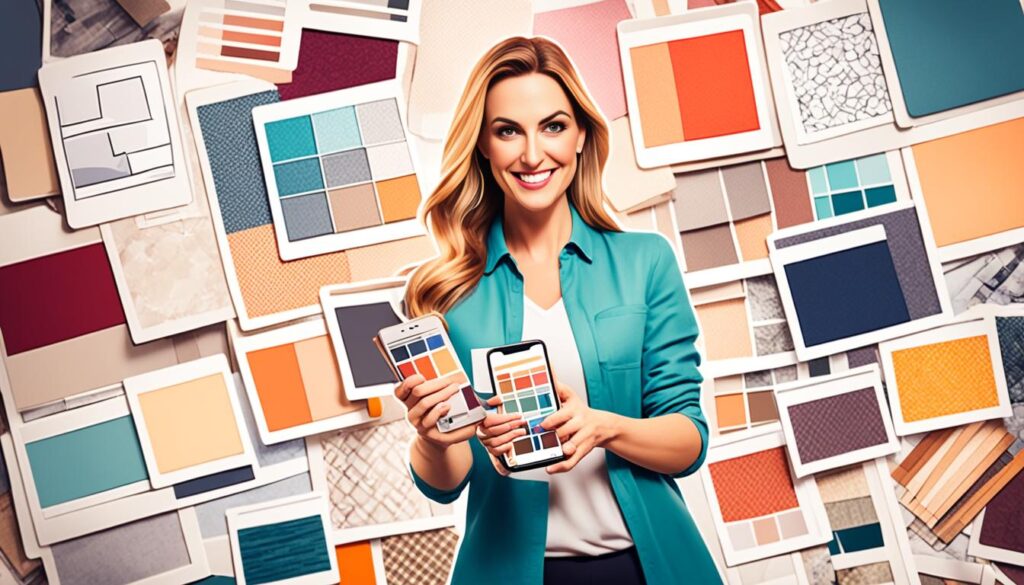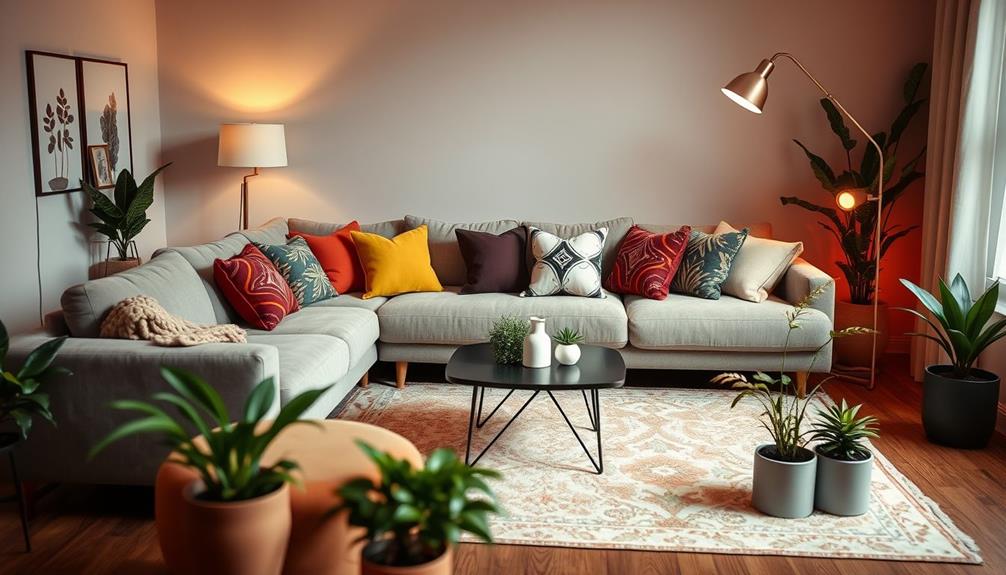In today’s digital landscape, Instagram has emerged as a pivotal platform for marketers, particularly for those in the interior design industry. If you’re looking to grow your interior design Instagram, understanding the nuances of this social media platform is essential. By showcasing your work visually, you not only engage potential clients but also cultivate a dedicated following that reflects your unique style and brand. Effective strategies for boosting Instagram followers for interior designers can tremendously enhance your audience engagement and visibility, positioning you as a leader in this competitive field.
With visual storytelling as a cornerstone of social media marketing for interior designers, it’s crucial to leverage techniques that resonate with your audience. From creating high-quality content to utilizing hashtags, your approach can significantly impact your growth trajectory on Instagram. In this article, you will learn how to effectively showcase your design work while engaging followers and attracting new clients.
Key Takeaways
- Posting consistently, between two to three times a week up to once or twice daily, is vital for keeping followers engaged.
- Using three to five relevant hashtags per post can increase your reach and engagement.
- Early morning or evening posts generally achieve better visibility and engagement rates.
- Creating user-generated content enhances your credibility and fosters community engagement.
- Switching to a business account unlocks valuable insights about your audience and performance analytics.
Understanding Instagram as a Marketing Tool for Interior Designers
Instagram plays a pivotal role in the marketing strategies of interior designers. This platform offers a unique opportunity to showcase creativity, connect with potential clients, and build a community around your brand. Understanding how to navigate this visual-centric space can lead to substantial results, especially when employing effective strategies for Instagram growth. One way to effectively grow your Instagram presence is by consistently sharing high-quality images and engaging with your audience through comments and messages. Additionally, utilizing popular hashtags and collaborating with other interior design professionals can help expand your reach and attract more followers. By implementing these strategies, you can create a strong online presence that can ultimately help you start your interior design business on the right foot.
Why Instagram Matters for Interior Design
Interior designers often grapple with what content to share on Instagram. This uncertainty can lead to irregular posting, hampering engagement and growth. By embracing well-thought-out interior design social media tips, you can transform challenges into opportunities, effectively attracting your target audience. Showcasing your creative process, sharing inspiration, and presenting project details can all serve to enrich your content strategy.
Stats on Active Users and Engagement Metrics
Instagram boasts around 1 billion active users, solidifying its position as a leading platform for visual storytelling. Remarkably, 90% of users follow business accounts. This statistic illustrates the potential reach you can achieve while working to increase followers on interior design Instagram. Regular engagement is crucial; nurturing interaction through comments, likes, and shares can significantly enhance your visibility within this dynamic community.
The Importance of Visual Content in Interior Design
Visual content remains vital in distinguishing your brand within the interior design niche. Creating aesthetically appealing posts that resonate with your audience can capture attention and inspire interaction. Consider documenting your design process, using location tags, and sharing educational content to engage your followers meaningfully. By applying these approaches, you will naturally attract attention and cultivate a loyal following, implementing effective strategies for Instagram growth.

| Statistic | Value |
|---|---|
| Active Users | 1 billion |
| Users Following Business Accounts | 90% |
| Posts per Day by Average Account | 1 |
| Monthly Visits | 2.9 billion |
| Instagram’s Age | 10+ years |
How to Grow an Interior Design Instagram
To effectively grow your Instagram presence as an interior designer, implementing a consistent posting schedule and actively engaging with your audience is essential. By doing so, you maximize your chance of reaching potential clients while keeping your current followers excited. Below are crucial strategies to support your growth.
Creating a Consistent Posting Schedule
Maintaining a steady posting rhythm keeps your content fresh and engaging. Aiming for a frequency of two to three posts per week is beneficial. For those looking to enhance their visibility further, posting up to twice daily can keep your audience engaged. Tools like Later or Buffer can help you manage this schedule effectively. Additionally, ensure that your posts feature valuable and captivating interior design tips to reinforce your expertise within the industry.
Engaging with Your Audience on Various Platforms
Engagement goes beyond simply responding to comments on your posts. Dive into conversations across multiple platforms to build a connected community around your brand. Encourage comments through engaging captions, and consider sending direct messages to new followers. This personal touch fosters relationships that enhance trust and encourage current followers to share your content with their network. By continuously engaging, you boost your chances of maximizing Instagram engagement and eventually expanding your audience base.

| Strategy | Benefits |
|---|---|
| Consistent Posting | Keeps your feed fresh and highlights your expertise |
| Engaging Conversations | Builds a strong community and encourages sharing |
| Video Content | Increases visibility and attracts more followers |
| Using Hashtags | Improves post visibility and connects with target audience |
Effective Strategies for Instagram Growth
To effectively boost your presence on Instagram, implementing strategic tactics is crucial. This can significantly enhance your chances of attracting more followers, especially in the competitive field of interior design. By understanding how to use hashtags effectively and knowing the best times to post, you can increase your reach and engagement.
Utilizing Hashtags for Greater Visibility
Hashtags act as a vital component in enhancing visibility on Instagram. A well-researched mix of high-volume, niche-specific, and localized hashtags can make a considerable difference. Using a balance of 10 to 20 relevant hashtags often leads to better engagement. Consider employing tags related to your specific design style or location. This approach not only helps in attracting potential clients but also improves your chances of boosting Instagram followers for interior designers.
Timing Your Posts for Maximum Engagement
Posting at the right time can drastically influence how many people interact with your content. Insights show that late evenings tend to yield better engagement rates, aligning perfectly with your audience’s online habits. Monitoring when your followers are most active allows for optimized timing. You can track performance metrics to fine-tune your posting schedule, utilizing findings from insights to enhance your interior design social media marketing strategies.

Maximizing Your Instagram Profile and Bio
Creating an engaging Instagram profile is vital for attracting potential followers and clients. A professional profile not only captures attention but also communicates your brand’s identity. Consider the four main fields available: USERNAME, NAME, BIO, and LINKS. Each of these elements plays a significant role in effective strategies for instagram growth.
Building a Professional Profile that Reflects Your Brand
Your username should be easily recognizable and aligned with your brand. The NAME field allows for up to 64 characters, making it important for Instagram search optimization. Use relevant keywords in this section to enhance visibility. Your bio is another crucial area where you can include keywords related to your services, increasing searchability and helping you understand how to grow an interior design instagram.
The Power of Bio Links and CTA Buttons
Instagram permits up to five links in your profile, with the first link recommended to direct followers to your website for monetization. Incorporating clear call-to-action (CTA) buttons helps guide users toward your desired actions, such as visiting your portfolio, booking a consultation, or exploring your services. This is essential for maximizing your engagement as it leads users to take meaningful actions.
Using Story Highlights to Showcase Your Work
Story highlights provide an excellent opportunity to curate and display various aspects of your portfolio. Showcase your best projects, client testimonials, and design processes in visually appealing collections. This feature allows you to tell your brand’s story more effectively and engages your audience in a more memorable way. Utilizing these highlights contributes to effective strategies for instagram growth by enabling potential clients to explore your work at a glance.

| Profile Element | Description | Max Characters |
|---|---|---|
| USERNAME | Your unique identifier on Instagram | 30 |
| NAME | Important for search optimization | 64 |
| BIO | Summary of your services, includes keywords | 150 |
| LINKS | Directs users to your website and other resources | 5 |
Conclusion
Growing your Instagram presence as an interior designer involves a strategic approach that emphasizes consistent posting, effective audience engagement, and strong visual presentation. By leveraging interior design social media tips, you can better navigate Instagram’s algorithms and elevate your brand’s visibility. Importantly, utilizing features like engaging Instagram Reels can significantly expand your reach, connecting you with non-followers and increasing your audience base.
Collaborations with brands and vendors can be a game-changer in broadening your reach, creating opportunities to attract new clients. Paid ads have proven effective for many interior designers, fostering engagement and serving as an excellent tool for brand exposure. Furthermore, Instagram Insights can provide invaluable data to fine-tune your strategies, allowing you to analyze the performance of your content and campaigns effectively.
By integrating these strategies with your marketing efforts, you can transform your Instagram account into a dynamic portfolio that showcases your creativity and design expertise. Remember, direct interaction through this platform is key to building strong relationships and fostering a loyal community of potential clients. Apply these tips for interior design Instagram growth, and watch as your presence flourishes.








